Opal: Gemstone and Jewelry
Opal is a gemstone that captures imagination and attention like no other. Its captivating play of colors and fascinating characteristics have entranced human beings for centuries. In this article, we will delve deep into the world of opals, their origin, characteristics, and the artistry behind opal jewelry, among other things.
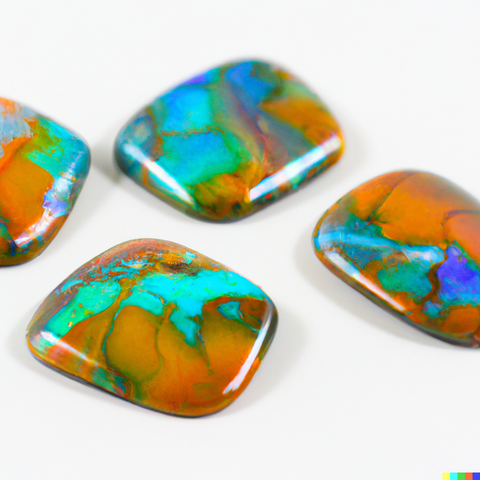
History:
The name opal has been derived from the ancient Roman word “Opalus,” which means “precious stone”. Opal is the national gemstone of Australia. It is predominantly found in Australia, but it is also found in other countries such as Mexico, Brazil, USA, Ethiopia, and Indonesia. Opal is not a mineral, but it is a mineraloid, which means that it does not have a crystal structure. Instead, it forms a series of tiny round spheres that create a matrix. Opals come in different varieties and grades, based on their constituents and color patterns.
There are precious opals, which display vibrant play of colors, and there are common opals that come in a single color or lack the intense play of colors. Opals are famous for their iridescent play of colors, which produce rainbow effects. These colors can be an array of colors, including green, blue, yellow, red, orange, brown, and even black. The play of colors is a result of the refraction and interference of light passing through the amorphous silica in the matrix.
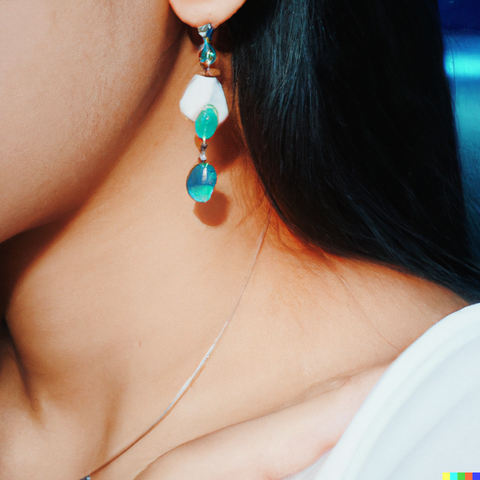
Types of Opals:
There are many types of opals, which vary based on their constituency, formation, and color patterns. Some of the popular types of opals are:
- Precious Opal - This is the most expensive and sought-after type of opal. It has a brilliant play of colors that change as the stone is viewed from different angles. The color patterns of precious opals can range from a single color to a mixture of colors. Some of the popular types of precious opals are Black Opal, Boulder Opal, Crystal Opal, and White Opal.
- Fire Opal - This type of opal has a bright orange or red color that resembles the color of fire. It is a transparent stone with a lower density than precious opals. Fire opals are mostly found in Mexico and are popular in Southwestern jewelry.
- Matrix Opal - This type of opal forms in the cavities of the host rock. It is a type of common opal that has a light background and small patches of colorful opal.
- Hydrophane Opal - This type of opal has a unique characteristic of being highly porous, which means it can absorb water. When it absorbs water, the appearance of the opal changes, making it more transparent. Hydrophane Opals come from the Yowah opal fields in Australia.
- Harlequin Opal - This is a variety of precious opal that has the distinctive pattern of closely spaced diamond-shaped patches of different colors. This pattern is unique and highly sought after by collectors.

Opal Color Patterns:
As mentioned earlier, opals come in a variety of colors. Here are the common color patterns of opals:
- White Opal - This opal has a pale white or light gray background color. It has a light to medium colored play of colors. White Opals are the most common type of opal and are usually the least expensive.
- Boulder Opal - This type of opal has a dark colored background with thin veins of opal running through it. The veins of opal create a vibrant play of colors. Boulder Opals are usually found in Western Queensland and are highly regarded for their durability.
- Black Opal - This opal has a dark body color, which can range from blue-black to jet black. The play of colors on Black Opals is solid and intense. Black Opals are found in Lightning Ridge, NSW, and are considered the most valuable of all opals.
- Fire Opal - This opal has an orange or red color, which resembles fire. The play of colors on Fire Opals is usually not as vibrant as that of precious opals.
- Crystal Opal - This type of opal has a transparent or translucent body color, which allows the play of colors to show off better. The color patterns of Crystal Opals can be either intense or subdued.

Opal Characteristics:
Opal is one of the most fascinating gemstones because of its unique characteristics. Here are some of the characteristics of opals that make them remarkable:
- Play of Colors - Opals are famous for their iridescent play of colors. The play of colors of opals is a result of the refraction and interference of light passing through the amorphous silica in the matrix.
- Opacity - Opals are not transparent but are translucent, which means they allow some light to pass through them. The amount of light that passes through an opal depends on the thickness and color of the matrix.
- Mohs Hardness - Opals have a relatively low Mohs hardness scale of 5.5 to 6.5. This means that opals are relatively soft and are prone to scratches and damage.
- Water Resistant - Opals are hydrated silica, which means they contain up to 20 percent water. Opals can absorb water, and wetting them often enhances their play of colors.
- Durability - Opals are not the most durable gemstones. Their low Mohs hardness makes them prone to scratches, chipping, and damage if not handled with care. The durability of opals can be improved by setting them in jewelry with protective settings, such as bezel or half-bezel.
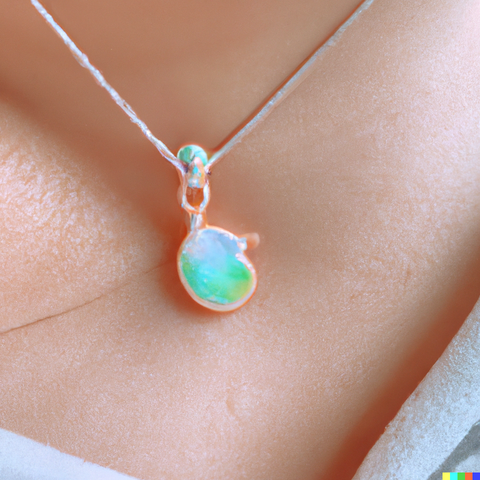
Opal Mining:
Opal mining is a challenging and dangerous task. Opal is mined from underground, where it forms in the cavities and crevices of the host rock. The mines are usually located in remote areas, and the process of mining can be hazardous. One of the most famous opal mining areas in the world is Lightning Ridge, New South Wales (NSW), Australia. Opal miners in NSW have to contend with harsh conditions, such as heat, dust, and noxious gases.
The mines are largely unregulated, and miners use primitive techniques and tools to extract opals from the rock. The process of mining is physically demanding and requires miners to work in shifts of up to 12 hours. Despite the challenges, opal miners continue to mine for opals, hoping to find the next big discovery.
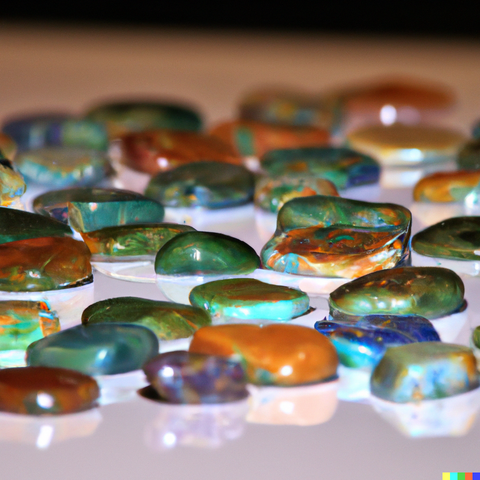
Opal Jewelry:
Opal jewelry has been around for centuries. Opals have been used in various forms of jewelry, such as necklaces, bracelets, earrings, and rings. The originality and beauty of opals make them popular as a choice for jewelry. Opal jewelry can be simple and elegant or intricate and detailed. The quality and value of opal jewelry depend on various factors, such as the type of opal used, the color play, the size and the quality of the setting. Opal jewelry requires special care to preserve its beauty and value. Here are some tips to take care of opal jewelry:
- Keep it dry - Opals are hydrated silica, which means they contain water. Exposure to water can damage and discolor the opal. Avoid wearing opals in the shower, while swimming, or doing dishes.
- Store it properly - Opals are prone to cracking and breaking. Store your opal jewelry separately from other jewelry to prevent scratches or damage. Place them in a padded jewelry box or soft pouch.
- Avoid prolonged exposure to heat - Opals are sensitive to heat, which can cause cracks and discoloration. Avoid exposing your opal jewelry to direct sunlight, hot water, or other sources of heat.
- Clean it gently - Opals should be cleaned gently and with mild soap and water. Avoid using harsh chemicals or abrasive cleaners that can damage the opal. Wipe your opal jewelry with a soft cloth and avoid using a brush or any other abrasive material.
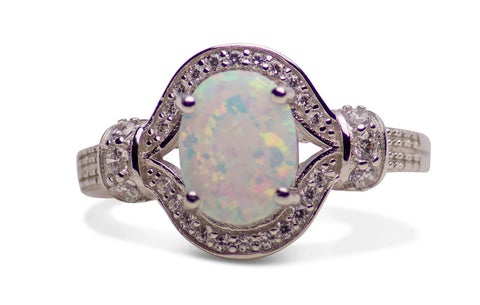
Opal is a gemstone that has fascinated human beings for centuries. Its unique play of colors and characteristics make it one of the most coveted gemstones in the world. Opal mining is a challenging but rewarding task, and opal jewelry is a work of art. Opal jewelry requires special care to preserve its beauty and value, and knowing how to care for it can ensure that it remains a treasured piece for generations.













Leave a comment